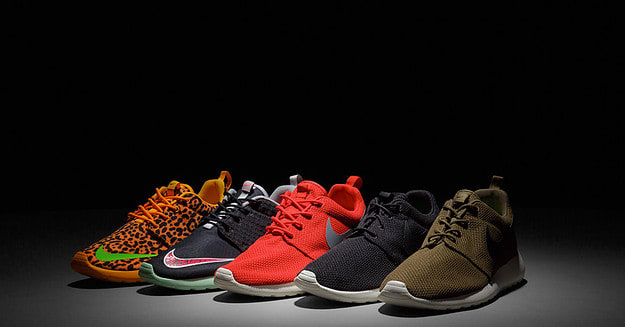The history of the Nike Roshe Run: its rise and fall.

The Rise and Fall of the Nike Roshe Run: From Minimalist Icon to Meme Culture 🎨👟
The history of the Nike Roshe Run: its rise and fall., Once hailed as a revolutionary lifestyle sneaker, the Nike Roshe Run has had a tumultuous journey — from cult-favorite to internet punchline. By 2025, the shoe carries a mixed reputation, often referenced on TikTok and Instagram as a “starter sneaker” for the uninitiated. But this wasn’t always the case.
Minimalism Meets Mass Appeal
Launched in 2012, the Roshe Run was designed by Dylan Raasch as a personal project rather than a corporate-driven release. Its minimalist aesthetic — a one-piece outsole, two-piece upper, and pared-down laces — was inspired by Zen philosophy. The original “Iguana” colorway even paid homage to the moss found in Buddhist temple gardens. At a launch price of $70, the Roshe was accessible, comfortable, and instantly wearable.
“The shape was something new, and the lower price made it an easy buy,” recalls Joe Staley, owner of Oneness sneaker store in Kentucky.
The Roshe didn’t rely on flashy marketing or celebrity endorsements. Instead, early adopters discovered the shoe organically through boutiques, niche influencers, and an emerging social media ecosystem. Its simplicity and versatility quickly earned it a loyal following.
Building a Community
Instagram played a pivotal role in Roshe Run’s rise. Sean Go, founder of the TeamRoshe account, helped cultivate a community of fans obsessed with hunting down new colorways.
“Their simplicity, low price, and comfort were very unique at the time,” Go says. “It was all about the chase — finding the next release anywhere in the world.”
Stores like Oneness thrived, moving hundreds of pairs in popular colorways, particularly the black and volt pink “Yeezy” edition. Limited collaborations, like Nike’s “Heart & Sole” edition, only amplified the hype.
The Turning Point
Despite its early success, the Roshe Run couldn’t escape the fate of many viral phenomena: overexposure. Nike’s mass production, combined with the shoe’s ubiquity, eventually diluted its exclusivity. Competitors also caught up — Adidas Boost redefined comfort, making the once-cutting-edge Roshe feel outdated.
“Once millions of units flooded Finish Line, Foot Locker, and Dick’s Sporting Goods, it was too late for it to be cool anymore,” says Staley.
Collectors and sneakerheads noticed the shift. What had been a lifestyle essential became a symbol of over-saturation. “When everyone’s wearing it — your dad, your coworkers, even moms — it loses that edge,” notes Lawrence Schlossman, former Four Pins editor.
Legacy of the Roshe Run
Though its popularity has waned, the Roshe Run remains a milestone in sneaker history. It was one of the first shoes to bridge comfort, style, and affordability, helping normalize lifestyle sneakers for mainstream audiences.
“The Roshe is so special in its own right,” Schlossman adds. “Everyone loved it in the early days: sneakerheads, everyday guys, even dads. That kind of universal appeal is rare.”
Even as the sneaker fades from the spotlight, enthusiasts like Go cherish their early pairs — a reminder of the first “Cup Drops Colorway” and the shoe that changed sneaker culture.
#history #Nike #RosheRun #sneakerculture #sneakerhead #minimalistfashion #sneakerhistory #streetwear #sneakercommunity #sneakerlegacy




